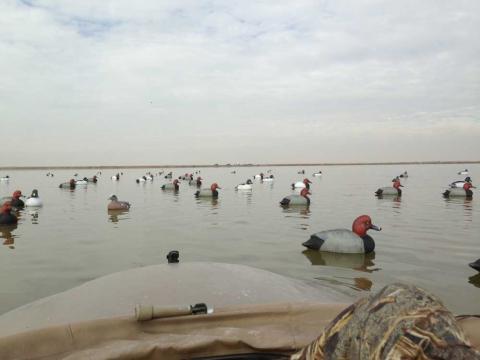Heath Wood
Not only does most of the U.S. population feel the hustle and bustle that December brings during the holidays and wrapping up the year, hunters feel that flurry as well. The archery season for whitetails is still in progress in many states, and some have a late whitetail muzzleloader season. Others prefer to break from hunting until after the Christmas season has passed. Most hunters are focused on wrapping up their deer season and wrapping Christmas gifts for family and friends; yet December is also a great time to call in coyotes.
It may be hard for some hunters to adjust from deer mode to predator mode. However, when cold weather filters into most parts of the country, the time to take advantage of cold weather coyote hunting is December. Below are three tactics to get your predator hunting season started in the right way.
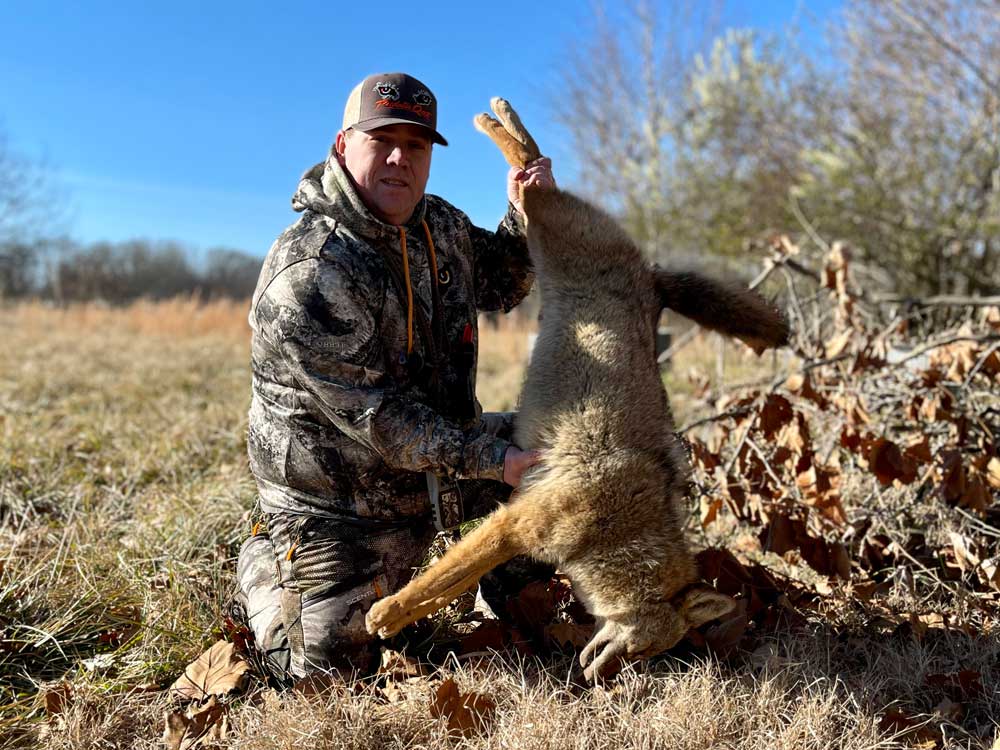
Post Deer Season Competition
As the deer seasons end, most hunters are sad to see them go. However, the success gained during the whitetail hunting seasons can stir territorial aggression from nearby coyotes.
Many hunters field dress their harvest and dispose of the carcass after processing it in the same areas where they hunt. Leftover deer remains equal free meals for coyotes and other predators to compete over. Coyotes are well known for their territorial instincts among each other, even when seeing who gets a meal first. I like to simulate this aggression when calling for coyotes during the same period.
When choosing a calling sequence for December, I often begin with a few howls from my FoxPro X Wave electronic caller. After playing a few howls, I pause for two or three minutes. The silence allows time for nearby coyotes to register in their minds that there is another coyote in the area and permits them time to respond. If nothing shows after three to four minutes, I continue calling with the sounds of aggravated coyotes or coyotes fighting, such as the FoxPro sounds of Agitated Coyote Barks, Coyote Growls, and Coyote & Fox Fight. When using agitated or fighting sounds, I simulate coyotes fighting over a meal. When nearby coyotes hear these sounds, they either want to see who is making the racket or join in on the fight themselves. Either way, coyotes respond, which provides a shot opportunity.
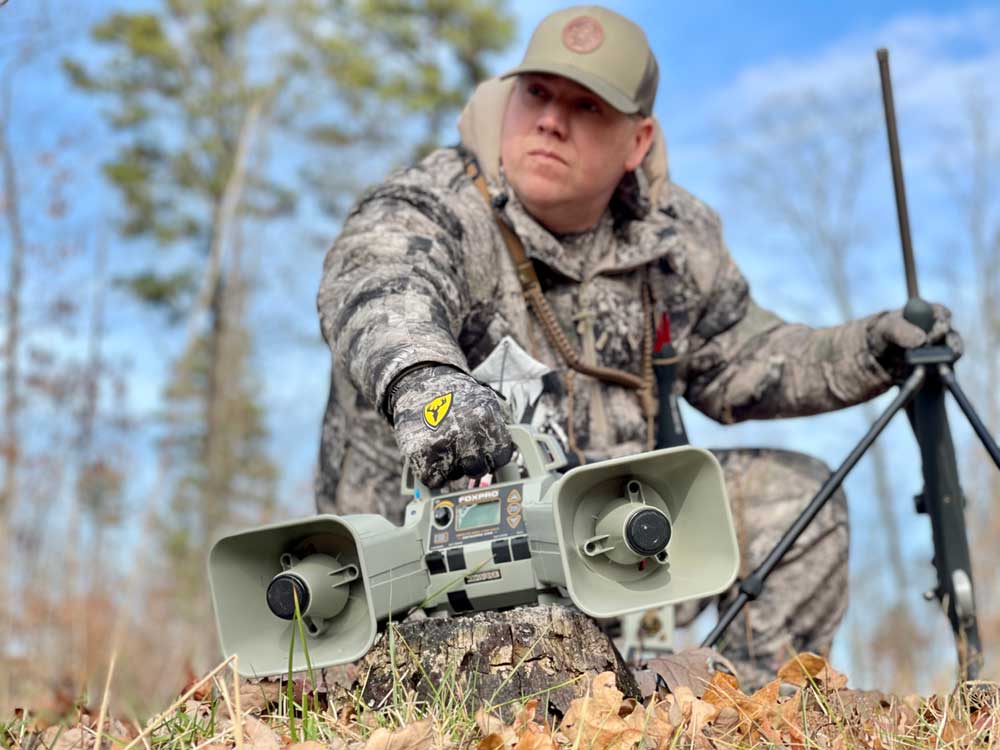
Focus On Coyote Pups
The second half of December marks the official start of winter. However, it is essential to remember that the first part of December is the last part of fall. The tail end of fall is also the time when coyote pups begin venturing out more on their own. What predator hunters like most about coyote pups are they are somewhat easier to call.
When calling in mid-December, I often incorporate a few coyote pup vocals into my calling sequence. I often play the sounds of a rabbit in distress, rodents in distress, or some type of food source sound when I first begin calling. After five or six minutes of distress sounds, I add to the mix by calling on my FoxPro Pup In Distress diaphragm call. A mouth call style lets me let out a pup howl, whine quickly, or make a pup in distress sound without muting the distress sounds that continue to play on my electronic call. By mixing the two types of calls, I imitate the sounds of a group of pups responding to food, who get distracted or begin fighting with each other while pursuing food. The realistic scenario of pups responding to a call attracts other pups and mature coyotes in the area to see where the commotion is taking place.
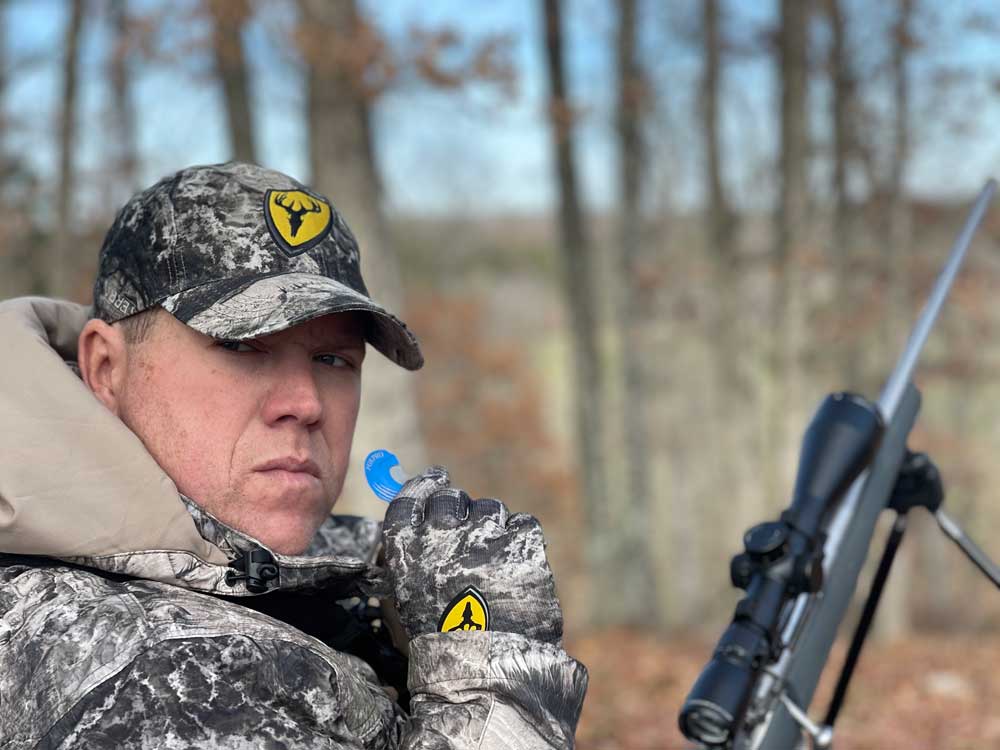
Cold Weather Food Sounds and Staying Warm
The beginning of the winter season parallels colder temperatures. The colder temps can be brutal on the hunter when out in the elements hunting but even more brutal on a coyote who lives in those elements. The instinct for a coyote to stay warm means they have an increased need for food as well. A desire to find more food makes distress sounds emulated by hunters sound like a dinner bell ringing to the cold and hungry coyote. When temperatures get colder, I primarily focus on distress sounds when calling. The breeding season for coyotes doesn’t usually occur until the end of January and the entire month of February. As mentioned earlier, the coyote pups have been sent out on their own by now, meaning the only thing going on in a coyote’s life is the need to find food and stay warm. For this reason, the focus should be on using prey in distress sounds to attract coyotes to your location more often.
As coyotes need food to keep their body temperatures warm, a predator hunter must pay attention to staying warm as well. I have recently been wearing the new Predator Quest clothing from Blocker Outdoors, explicitly designed for predator hunters. The Blocker Outdoors/Predator Quest features thermal pants as a base layer to keep warm, insulated pants, and the Predator Quest Turret ½ Zip Jacket that repeals moisture and has Thermal Mapped Thinsulate insulation in the hood and sleeves. Insulation can also be found in the handwarmer pocket, which works excellent to keep the remote of an electronic caller warm and hands.
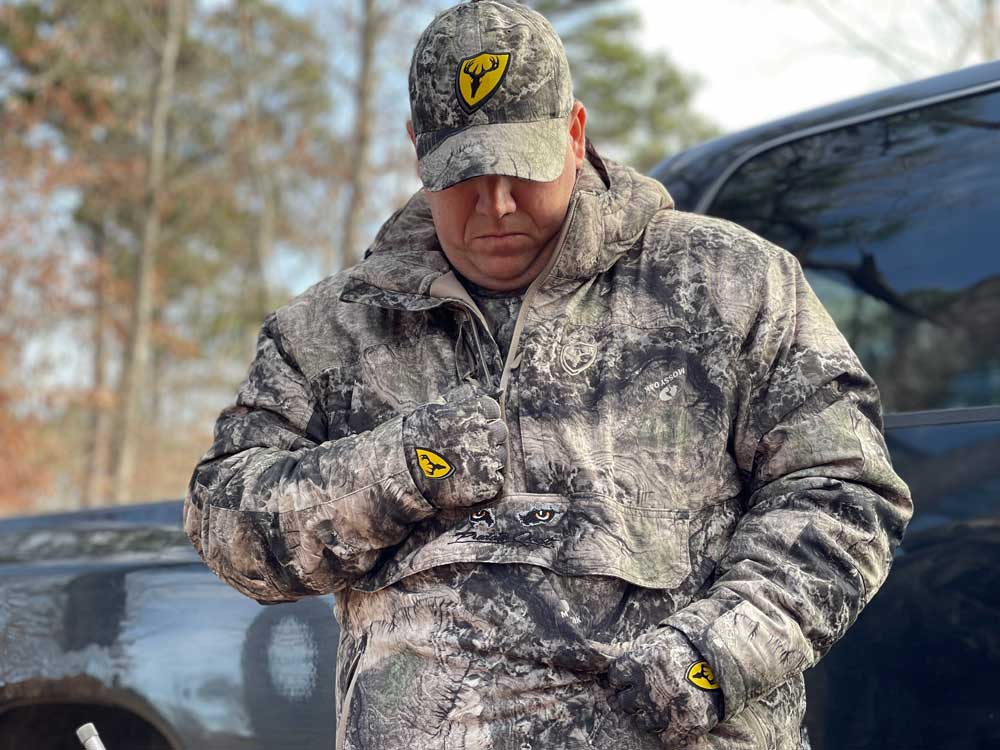
It is also vital to wear a well-insulated boot like the Lacrosse Footwear Windrose boots, which are 100-percent waterproof and feature Thinsulate Ultra Insulation that keeps predator hunters dry and warm throughout an entire day of hunting. Staying warm and dry is crucial for predator hunters to beat the winter elements while coyote hunting. Coyotes respond throughout the day during the winter months when it is cold. To continue hunting the entire day, you must wear the right gear like the Blocker Outdoors Predator Quest clothing and Lacrosse Footwear.
















